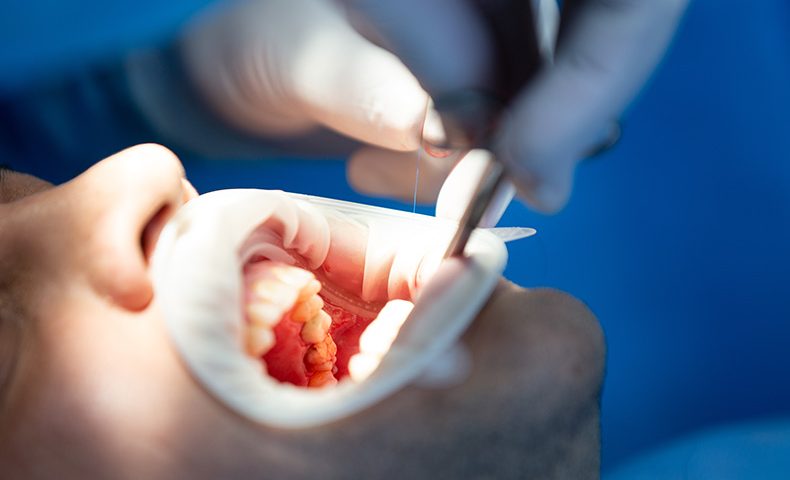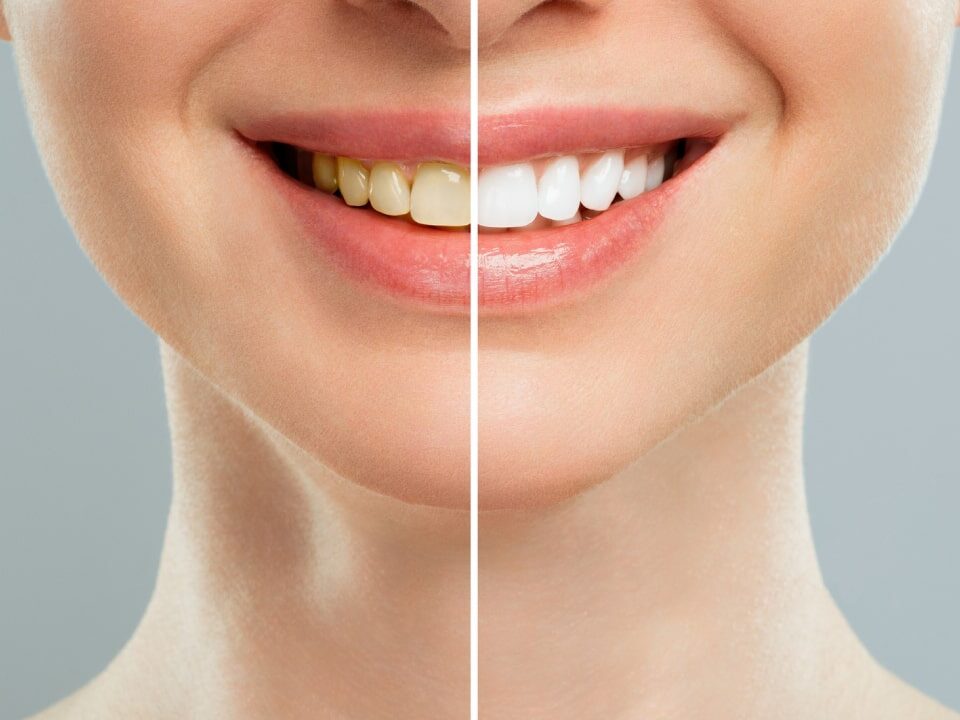
How to Get Rid of Cavities Without Drilling?
January 25, 2023
What are Geriatric Dental Caries in Elderly Patients?
March 15, 2023Cavities permanently damage your teeth. They turn the hard surface into small gaps or holes. Cavities are also called tooth decay or caries. They are caused by different factors, including germs and bacteria in your mouth, frequent munching, sugary drinks, and failure to clean your teeth properly.
Dental cavities and tooth decay are among the most frequent health issues worldwide. They are most frequent among children, teens, and the elderly. Cavities, however, may affect anybody’s health that has teeth, even newborns.
How Common are Tooth Cavities?
When Americans are in their mid-30s, over 80% have had a cavity at least once. In addition, dental cavities are one of the most frequent chronic disorders hurting people of all ages.
Types of Dental Cavities
Tooth decay can damage all tooth layers. A cavity in the tough outer layer of the tooth, enamel, can take up to three years to emerge. After that, decay moves faster through the dentin, or middle layer, to the pulp, or innermost layer. The pulp of a tooth includes the nerve endings and blood vessels. The following are examples of tooth decay:
- Smooth surface: This cavity destroys tooth enamel over time. Brushing, flossing, and dental cleanings can help prevent and occasionally reverse it. This type of dental decay between the teeth is common in people in their twenties.
- Pit and fissure decay: Cavities arise on the tooth’s chewing surface. The grooves, small pits, and fissure decay usually begin in adolescence and advance swiftly.
- Root decay: Root decay is more common in older adults with receding gums. Gum recession makes the root vulnerable to plaque and acid. It is hard to avoid and treat root decay.
Tooth Cavities Symptoms
The degree of decay determines the symptoms of a cavity. They are as follows:
- Appearing of a visible hole in your teeth
- Your teeth become sensitive.
- You have pain when you bite down.
- Pain in your teeth
- There is a black or white stain on your teeth.
What Causes Dental Cavities?
Plaque, a sticky material that attaches to teeth, causes tooth decay. Plaque is a mash-up of:
- Acid
- Bacteria
- Food particles
- Saliva
Everyone’s mouth contains germs and bacteria. Bacteria in your mouth convert sugar into acid after you eat or drink sugary foods. When you consume anything sweet, plaque starts to build on your teeth. This is why it is essential to brush your teeth frequently.
Your teeth are covered by plaque, and the acid in plaque can wear away the enamel over time. The enamel on your teeth protects the inner layer from decay by acting as a shield. The danger of rotting grows when your tooth enamel deteriorates.
There are varying degrees of susceptibility to cavities among people. The following are risk factors:
- Excessive consumption of sugary or acidic beverages and food
- A bad dental hygiene habit, such as not brushing or flossing daily
- Insufficient fluoride intake
- Dry mouth
- Anorexia, bulimia, or other eating disorders.
- An acid reflux condition causes stomach acid to erode your dental enamel.
Cavities are more common in the back teeth. Grooves and holes in molar teeth can capture food particles. Furthermore, these teeth might be difficult to reach when cleaning and flossing.
How are Cavities Diagnosed?
Dental checks twice a year are the most excellent method to catch cavities early when your dentist can preserve most of your tooth. Your dentist will inspect your teeth using a variety of equipment. When your dentist probes a cavity-ridden tooth, it will feel softer. Dental X-rays may also be taken. X-rays reveal cavities before damage is evident.
Tooth Cavity Treatment
Let’s Talk about how to Freeze Cavities with Dr. Foroughi at Atrium Dental in Phoenix, Arizona.
Silver Diamine Fluoride (SDF) is the most non-invasive method and the latest innovation in the NO-NEEDLE Tooth cavity treatment. Our adult and pediatric patients have been cheering this method at Atrium Dental for years.
SDF has been widely used in Europe, the Middle East, and New Zealand for over a decade. In 2015 FDA approved this material for caries management in the United States, and it has been playing a main role in pediatric caries management since then.
Caries or Cavities are the soft structure of the tooth caused by the by-product of sugar decomposition in the mouth. SDF is an element with a high affinity for such soft structures and seats in the area, sealing off the compromised structure like a shield.
Sealing off the soft tooth structure arrests the cavity and freezes the area into its current state, preventing the progression and deepening of caries.
Benefits of SDF in Tooth Cavity Treatment
- It is non-invasive
- No needle involved
- Painless,
- Affordable
- Extremely safe
- Freezes caries and prevents progression
- No local or general anesthesia
- Works great for pediatric, adult, and elderly patients
Does SDF Apply to all Cavities?
- It cannot be applied to deep caries into the dentin.
- It can discolor the baby’s tooth temporarily.
- It does not help carry if there is an infection in the area.
- It may need multiple treatments for patients with poor oral hygiene.
What Happens If Tooth Cavity is Not Treated?
The deeper layers of your teeth are damaged when you don’t treat cavities. They can cause severe dental pain, infection, and tooth loss. Regular dental appointments with your dentist and proper brushing and flossing routines are the best way to prevent cavities and tooth decay.
Tooth Cavity Treatment: When to See a Dentist?
You may be completely unaware that a cavity is growing. That is why, even though your mouth feels good, it is essential to get frequent dental examinations and cleanings. However, you should see your dentist immediately if you have a toothache or oral discomfort.
If you see or experience any of the following symptoms, you should contact your doctor:
- Bleeding in your gums
- Having difficulty chewing food
- Infection signs
- Having a swollen face
- Having a toothache or mouth pain
How to Prevent Tooth Cavities
Tooth cavity prevention starts with you! It is time to learn how to reduce the risk of having tooth decay by doing the following:
- Brush your teeth with toothpaste containing fluoride at least twice a day.
- Floss your teeth at least once daily.
- Reduce your intake of sugary and acidic food such as sweets, candies, soda, juice, and refined carbs.
- Limit having snacks between your meals.
- Consider having dental sealants applied to your teeth.
The following food types can aid in the prevention of tooth decay:
- Fruits and vegetables high in fiber
- Calcium-containing foods
- Sugarless chewing gum
- Black or green tea, unsweetened
- Fluoridated water
Also, remember to visit your dentist at least twice a year for regular dental check-ups and cleanings. This allows you to receive treatment for any concerns discovered by your dentist and assist in avoiding future dental problems.
Tooth Cavity Treatment Near Me in Ahwatukee, Phoenix, Arizona
Dr. Foroughi at Atrium Dental in Phoenix, Arizona, supports this conservative and non-invasive method. He understands SDF is only for some cases. Dr. Foroughi has been using SDF widely for baby teeth instead of traditional restorations for kids. Please call for a consultation to see if you or your children are good candidates for SDF. Atrium Dental 480.940.4321



